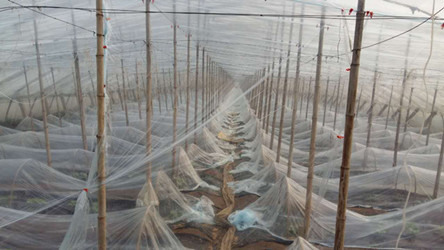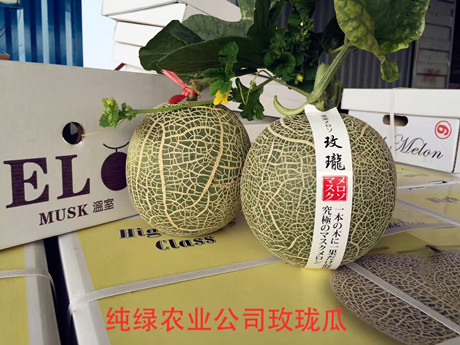Cantaloupe melon varieties are rather uncommon on the Chinese market. "The main reason for this is limited cultivation technology and experience. Drawing from Japanese cultivation technology is one thing, but combining the cultivation technology with China's climate and soil is an entirely different matter. Only through continuing tests and improvements can we successfully grown cantaloupe melons," says Mr. Zheng from Hainan Chun Agricultural Development, a grower of Japanese cantaloupe melons in Southern China.
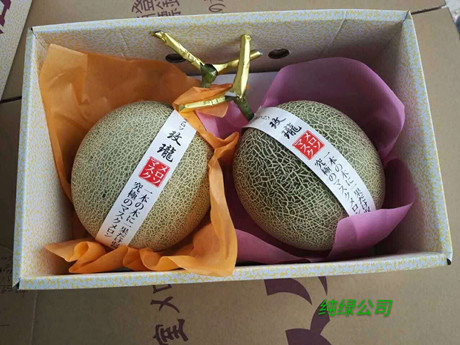
The Jade, a Japanese cantaloupe melon
The first encounter and then many years of cultivation
"When I was young, I studied Japanese. I also regularly went to Japan for business. That's where I first tasted cantaloupe melons and the look and taste of the fruit left a deep impression on me. The net pattern on the outside gives the green melon a very artistic feeling. Many people don't believe that cantaloupe melons grow naturally when they see one for the first time. They all think the net pattern is added in the last stage before ripeness. Because the beauty of the pattern varies, the price for a beautiful melon can be ten times higher than the average. The cantaloupe melon should be eaten around 7 days after harvest, because that's when it's fully ripe. The water content goes up to 88%. The fruit flesh has a vibrant fragrance with a hint of musk. The taste is sweet and very juicy."
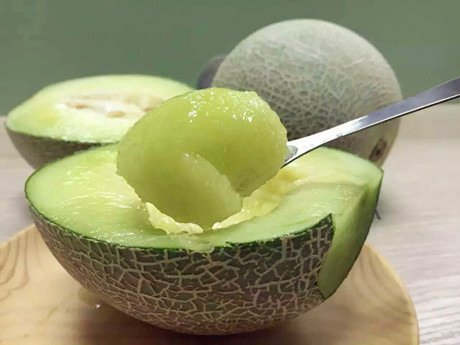
"When I came back to China, I discovered there was no similar fruit on the market. It made me determined to understand and promote the variety. I gradually discovered that Chinese agricultural specialists had brought back cantaloupe melons from Japan in the 90s for cultivation experiments. But they were never cultivated on a large scale. Over those 20 years, more than 100 enterprises and families tried to cultivate cantaloupe melons in China, but there were none who could work out a stable high quality or supply the whole year through."
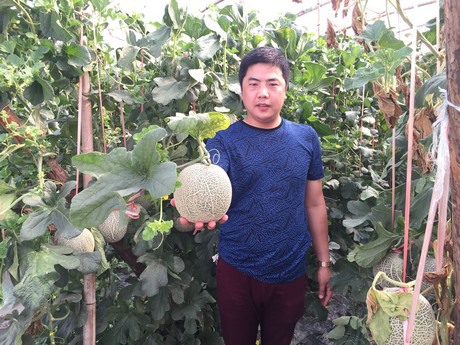 Liu Jingle, assistant manager and head of sales
Liu Jingle, assistant manager and head of sales
"We believed that we had the capabilities to fill that void. So from 2011 we started bringing in green cantaloupe melon seeds from Japan. We also welcomed a Japanese cultivation specialist, who helped us to bring their technology to the warm environment of Hainan for cultivation experiments. In the first two years, the quantity and the taste of the fruits wasn't right. We weren't familiar with the Hainan natural environment. At times, the melons didn't have a nice net pattern either. We had no other option but to continue inviting Japanese and Chinese cultivation experts to improve our cultivation techniques. In 2014, we finally had a first small harvest of high-quality green melons. The taste could match that of Japanese cantaloupe melons. Our years of hard work started to pay off."
"The only scaled-up cultivation in China with continuous supply"
After we fine-tuned the method of cultivation of the Hainan cantaloupe melon we eventually developed a stable quality, had scaled production and a continuous supply the whole year round.
Jade cantaloupe melon sprouts in the greenhouse
"While we persisted in the use of Japanese cantaloupe melon seeds for the cultivation, we successively built large-scale cultivation bases in Hainan, Hebei, Shandong, etc.. The cantaloupe melons from Hainan mainly supply the market from December until May the following year. The Hebei and Shandong melons can supply the market in the remaining months. That way we became the only cultivation enterprise for Japanese green melons that was engaged in large-scale cultivation and that offers a supply the whole year through."
"At the same time, we also registered the 'Jade' brand name. We use it to sell our green melons in a professional way."
Jade cantaloupe melons from Hainan Chun Agricultural Development
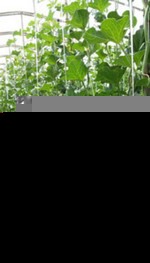
"Looking back at these last years, it becomes clear how many colleagues in the business perished in the process of experimentation. Thinking of it, we believe that the following reasons influence the possibility of success. First of all, the cultivation cost of cantaloupe melons is high. Not only are the seeds expensive, but the growing period is long and the cultivation techniques are demanding. Seeds imported from Japan for example cost 2 RMB per seed, but the growing period is 15 days longer than that of Hami melon. Also, the cultivation technique does not only influence the taste of the melon, but also the formation of the net pattern on the peel. If you add continuous supply throughout the year to that, it's even more difficult. Even if the problems in the cultivation segment are solved, selling and attracting consumers is still another world of challenges. Take attracting consumers as an example: cantaloupe melons should be consumed 7 days after the harvest for the best taste. Eaten earlier, they are sweet but less aromatic, so the true value gets lost. How then can we convince consumers to wait patiently for 7 days? Or how can we supply melons that are ready to eat? This is the main factor that decides the profit. In the past 20 years, many people believed the green melons to be an investment with a good product and a good profit, so they resolutely started cultivation. But in the end, the endeavour always ended in failure due to one of these many reasons."
"Afterwards, we slowly worked towards a solution. Doing things for yourself brings experience. We are a cultivation enterprise that possesses cultivation techniques and focuses on the quality of the product. So we handed the responsibility of sales over to a sales company. At the moment, we have trustworthy business partners in some of the large markets like those of Beijing, Shanghai and Canton. At the same time we also look for sales partners in second and third tier markets. That is the way to go to let more Chinese consumers taste the refined taste of Jade green melons."
Huge market development potential
"Right now, there are almost no Japanese cantaloupe melons on the Chinese market. But varieties from Taiwan and mainland regions are increasing. These varieties may be very different from the cantaloupe melons, but they can basically reflect the style. Incomplete statistics show that in 2015, 8,000 tons of cantaloupe melons came on the Chinese market. In 2016 that volume is estimated at 13,000 tons. This demonstrates how the consumption of green melons is growing and how the cultivation area is expanding accordingly."
"Be that as it may, compared to the 20,000 tons of green melons sold in Japan, the Chinese market still has ample space for expansion. That is a bit of an understatement, considering that the Chinese population is ten times that of Japan. I am confident that with the maturity of the cultivation techniques and the efforts of the sales companies in every region, the sales volumes of green melons on the Chinese market will grow exponentially year by year. Also we use Japanese imported seeds and Japanese cultivation techniques to create the 'genuine' Jade green melon brand. The melons will stand out among other varieties for their remarkable appearance and taste."
Hainan Chun Agricultural Development
Hainan Chun Agricultural Development was founded in May 2011. After 5 years, it is now the only Chinese cultivation company that can cultivate Japanese cantaloupe melons on an extensive scale with a year-round supply. In 2016, the supply volume is at about 4000 tons of melons registered as 'Jade green'. The goal of the company is to let any Chinese consumer taste the Jade green melons of international excellence, at an affordable price and without having to leave China.
For more related information,
Liu Jingle, Assistant Manager and Head of Sales
Telephone: +86 1348 0749 683
Email:
[email protected]Wang Yan, CEO
Hainan Chun Agricultural Development Telephone: +86 400 877 7878
Email:
[email protected]Website:
http://www.muskmelon.cn/Address: Yongan Road, Yongan parc 1-15C, Dongfang city, Hainan province



